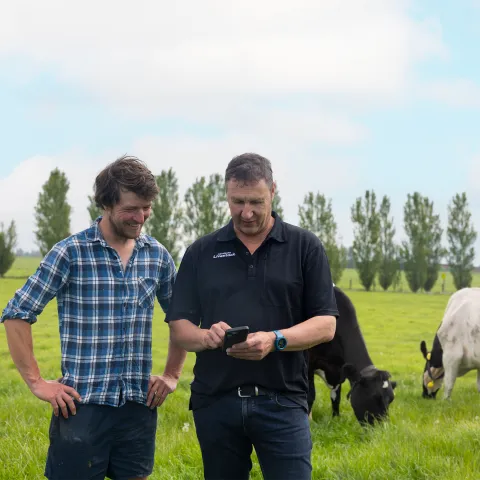Digital farming is becoming almost as much a part of New Zealand’s landscape as sheep.
From remote hill country to expansive dairy farms, data-driven insights are reshaping how livestock farmers make decisions, care for animals and grow business. Lifestyle farmer Maree Furniss sums it up simply, “It has opened up opportunities. We can make decisions that we would not have been thinking about making before.”
Because at the heart of digital livestock farming is a simple principle: better information leads to better decisions. In Maree’s case, she uses smart technology to make decisions on when to keep or sell stock. Other farmers are harnessing data to track and enhance reproductive performance, monitor animal health and even improve breeding genetics.
Understanding the role of data in livestock farming
Smart farming technology isn’t about replacing the farmer’s eye — it’s about backing up good instincts with solid evidence. This regular, real-time visibility is helping farmers make informed choices every day, not just at key points in the season. And with the right tools, it’s easier than ever.
Data collection tools like electronic ID (EID) tags and automatic weighing systems allow farmers to track individual animal performance. This data is sent straight to a device backed with farm management software. By analysing it, farmers can identify patterns and make proactive decisions wherever they are.
This knowledge gives farmers the ability to spot sick or underperforming animals, allowing timely treatment or changes to feeding strategies. This same data also helps farmers wean, breed or sell the animal at optimum weight, therefore selling for the best price per kilogram and maximising profits.
Let’s break the key benefits of data-driven farming down a bit further:
- Improved herd health through early detection of issues, enabling quicker treatment and reducing the risk of disease spreading through the herd.
- Enhanced decision-making with real-time monitoring and predictive tools, making everything from breeding to drafting more strategic.
- More efficient operations with digital tools streamlining data collection and reducing manual record keeping.
Best practices to get the most from data
First, it’s important to invest in the right digital tools. The right solutions will integrate with your existing farm management system. The easier it is to see and use your data, the more powerful it becomes.
Once you have that data, don’t just track performance, use it to guide decisions. Look for trends, compare seasons and test assumptions to make your operation more agile and adaptive.
And finally, consistency is key. Regularly monitor weight, health indicators and feeding patterns to stay ahead of issues and keep animals performing at their best. Because replacing guesswork with facts is how smart farmers stay one step ahead in New Zealand.
